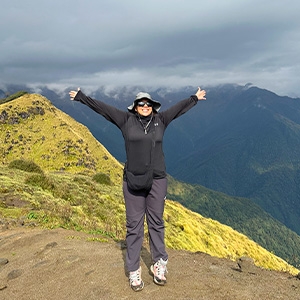Who doesn’t dream of a vacation, trekking in the serene mountains, letting themselves get lost in nature, breathing fresh Himalayan air, and finding peace away from the chaos of life? Exactly, everyone does. And there’s hardly a place more inviting than Nepal to make that dream come true. From the tallest peaks of Everest and Annapurna to the serene trails of Langtang and Manaslu, Nepal has some of the most beautiful and surreal trekking trails on earth. Every year, thousands of trekkers visit Nepal not just to be in nature but to feel something deeper, a sense of wonder, freedom, and connection with nature.
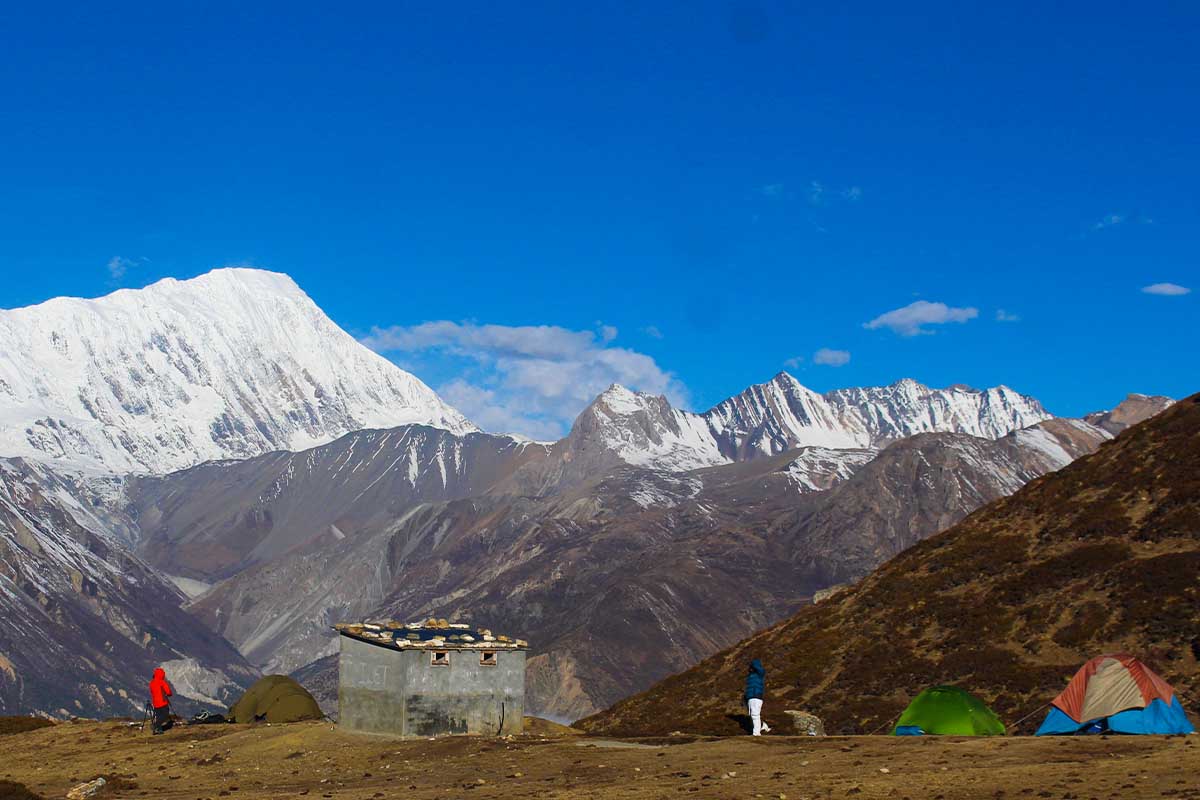
However, as we seek out these beautiful moments in the mountains, we overlook a plain fact that these landscapes are changing. The glaciers are melting, and the snowlines are creeping higher. Once predictable weather patterns are now growing erratic. Global warming is not a distant threat; it is occurring right in front of us, even as we trek among these trails.
Along with climate change, a second, more visible threat in the Himalayas is the amount of garbage being left on the trails. From plastic bottles tossed into the bushes, wrappers tucked under the rocks, and non-biodegradable wastes dumped behind the lodges. All of that unnecessary trash is building up steadily, quietly, and relentlessly. The same trails that were formed untouched now risk becoming polluted paths.
The irony is heartbreaking; we come to Nepal to experience pure nature, but our presence, if not mindful, can be a force of its degradation. Yet, here’s the hope we can change this.
We can definitely explore the allure of the Himalayas without even harming them. It just takes a little awareness, a few small changes, and a genuine will to protect what we are here to adore. By minimizing the waste, refusing single-use plastics, carrying reusable alternatives, and carrying back our garbage with us, we can leave the trails tidy as they were. We can ensure that the future trekkers, both domestic and international, get the same opportunity to enjoy the same wonders and landscapes that we do. Trekking is not just about reaching the summit; it is about the journey, the nature, and the impact you leave behind.
Tips to Minimize Waste while Trekking in Nepal
1. Carry a Reusable Water Bottle and Water Purifier
Trekking in Nepal means spending days on the trail, often in the remote areas where a bottle of water is the most accessible, but an environmentally bad option. Each discarded plastic bottle is an everlasting guest in such pristine landscapes. As there is limited waste management in the mountains, such bottles often become a target to be burned, buried, or worse, thrown into rivers and forests. Instead of this, we can avoid it by carrying a reusable water bottle or hydration bladder. After that, it is easy and safe to consume local water using water purification techniques such as UV purifiers or iodine/chlorine tablets. Boiled or filtered water is also available at a lot of tea houses for a fee, which is a convenient and green way of avoiding plastic bottles altogether.
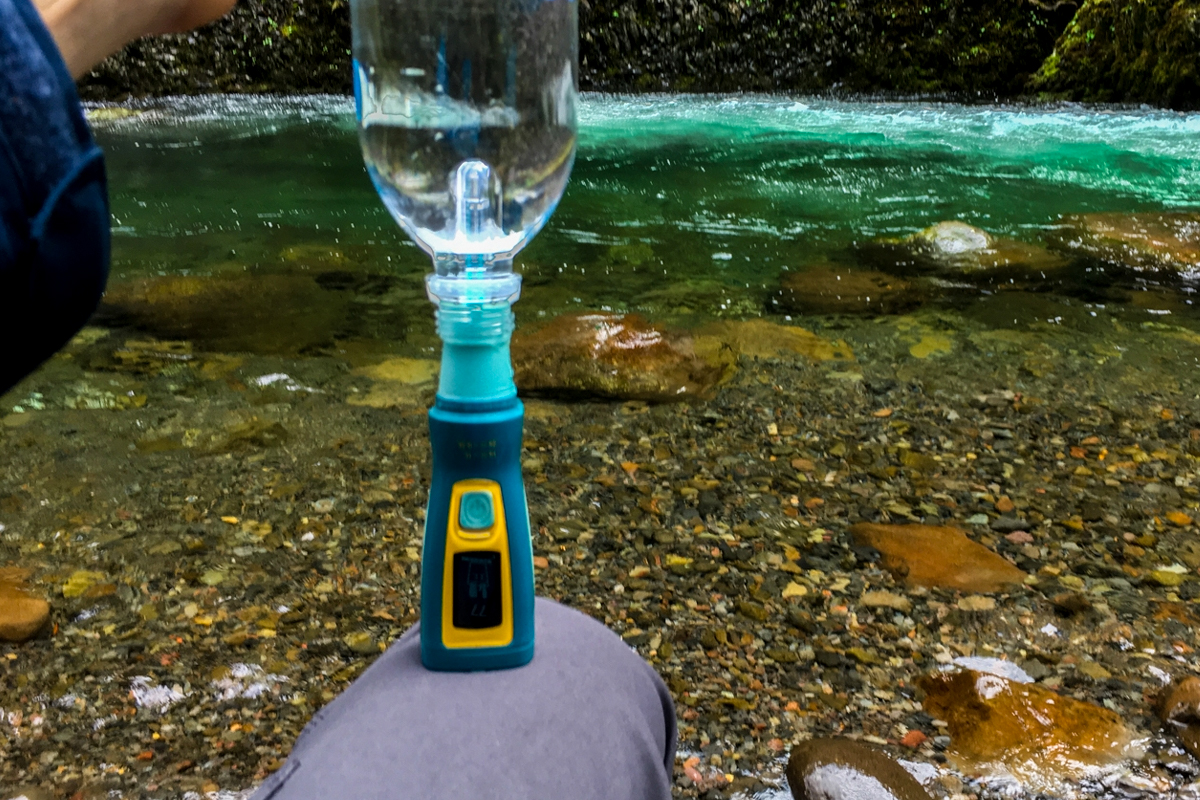
Quick Tips:
- Carry a refillable water bottle or hydration bladder that you can fill up along the hike.
- Use a travel water purifier, such as a UV sterilizer, or water purification tablets (iodine or chlorine).
- Many tea houses and lodges along the trekking route also provide boiled or filtered water for a small fee, safe to drink and much more environmentally friendly.
- By adopting this habit, you’ll not only reduce waste but also save money and avoid contributing to the logistical burden of plastic disposal in remote areas.
2. Say No to Single-Use Plastics
Single-use plastics may seem convenient, but they create a long-term problem for the environment. Most trekking snacks, hygiene products, and even gear accessories come wrapped in non-recyclable plastic. Unfortunately, not many proper waste collection systems are present in Nepal's countryside. This causes plastic to be burned (with harmful smoke) or scattered into the environment. You can contribute by keeping your food wrapped in reusable containers or wraps, carrying your own cloth shopping bag, and declining items like plastic cutlery, straws, and disposable toiletries. Each small action on your part can lead to a cleaner trail for everyone.
Quick Tips:
- Avoid single-use wrapping snacks, pack them into reusable containers or ziplock bags
- Use a reusable shopping bag, whether you are buying a souvenir, snacks, or even fruits
- Try not to use plastic straws, cling film, pre-packaged food in plastics, and even disposable cutlery.
- These small changes in how one packs and consumes along the trail make a big impact in keeping the environment plastic-free and spotless.
3. Bring Reusable Dining Implements
During trekking in Nepal, food is typically eaten at small local restaurants or tea houses. In the most remote areas, due to limited infrastructure or choice of camping, food has to be consumed off disposable plastic plates, cups, or spoons—especially during peak season when there are plenty of trekkers. These throwaway items quickly pile up, and with not many waste management systems in place, they often end up littered. Taking your own light, compact, reusable, or biodegradable cutlery not only discourages plastic use but also ensures that you'll always have spotlessly clean, reliable eating spoons and forks. It’s a simple, practical habit that promotes sustainability and respects the fragile ecosystem you’re passing through.
Quick Tips:
- Bring a lightweight reusable plate, cup, and spoon/fork.
- Carry a food-grade container for leftovers or lunch.
- Wash and reuse your own gear to reduce dependency on disposables.
4. Take Your Trash Back
The golden rule of trekking responsibly is simple: “Leave no trace”. Even a small tissue paper or wet wipes will take years to disintegrate in low-temperature, high-altitude conditions. Few are aware that trash cans often lead to open burning or dumping. That is why it is so important to “pack in what you pack out”. Carry a small reusable waste bag in your backpack and collect your non-degradable waste—snack wrappings, dirty tissue, sanitary towels, etc. Dispose of your waste in towns like Pokhara or Kathmandu properly at the end of your hike in their dumps. It is a small personal gesture that goes a long way when everybody does it together in keeping Nepal's trails clean and beautiful for all.
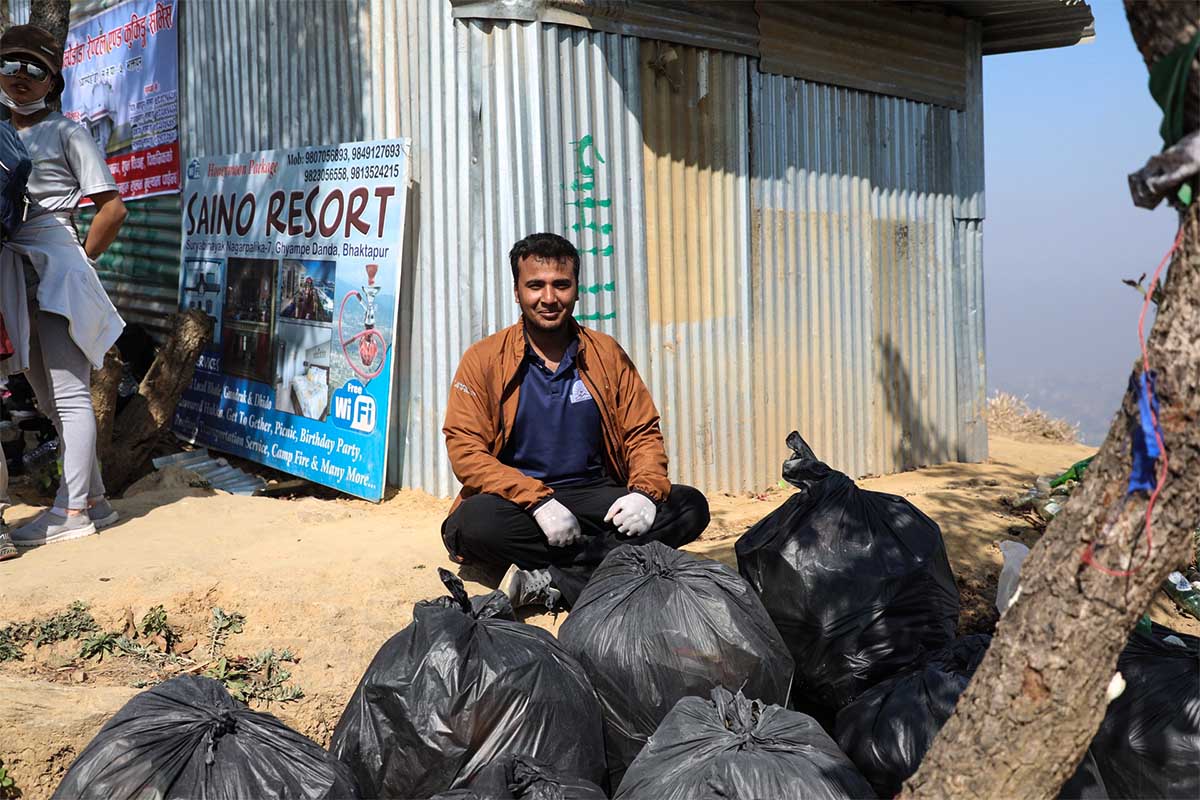
Note: Booking your treks with a sustainability-conscious travel agency like Footprint Adventure not only ensures you an unforgettable but also a responsible trekking option with the “Carry Me Bag” Campaign. Here, we provide all our trekkers with a reusable bag to collect and take their trash back to Kathmandu.
5. Choose Eco-Friendly Toiletries
Even personal hygiene practices have unintended consequences when trekking in the remote trails of Nepal. Harsh chemicals found in most commercial shampoos, soaps, and toothpastes cannot readily be broken down in the environment, contaminating rivers, streams, and soil. Wet wipes that are commonly used due to convenience are especially bad since the majority are not biodegradable and are usually carelessly discarded.
A simple switch to biodegradable toiletries goes a long way. Biodegradable soap and toothpaste dissolve on their own and minimize your footprint. When nature calls, properly dispose of human waste by burying it at least 6–8 inches deep and 200 feet away from any water source to avoid contaminating the water and keep the trail clean.
Quick Tips:
- Use biodegradable soaps, shampoo bars, and toothpaste.
- Don't use non-biodegradable wet wipes; switch to compostable wipes or reusable cotton pads.
- Dispose of toilet waste properly—6–8 inches deep and away from water sources at all times if camping.
6. Avoid Over-Packing in Food Supplies
Convenient packaged foods are easy to carry but come in several layers of plastic that turn into garbage the moment they reach the trail. Where we hike in the remote regions of Nepal, there are minimal or no waste disposal facilities, thus plastic packaging is a huge problem. One of the easiest ways to reduce your trash on the trail is to pre-pack your food and snack stuff before the hike. Store nuts, dried fruits, granola bars, or cookies in reusable ziplock bags, beeswax wraps, or paper pouches. Not only does this prevent you from having all that plastic, but it also makes your pack lighter and more organized.
Quick Tips
- Cut out all excess packaging before setting off.
- Pack snacks in reusable or compostable containers.
- Opt for low-waste, lightweight foods that don't have wrappers.
7. Join or Support Local Cleanup Campaigns
Nepal also boasts an increasing number of environmentally friendly trekking groups and local communities that host clean-up treks to clean popular trails of trash. Efforts such as the Eco Everest Expedition pick up tons of garbage deposited on the mountain annually. As a trekker, you too can make a difference by volunteering in such programs, clearing the trash on the way, or simply giving to organizations that support eco-friendly trekking. Not only do these efforts collect the trash, but they also make other trekkers aware of the issues. Your donation—be it big or small—is an example and inspires others to act.
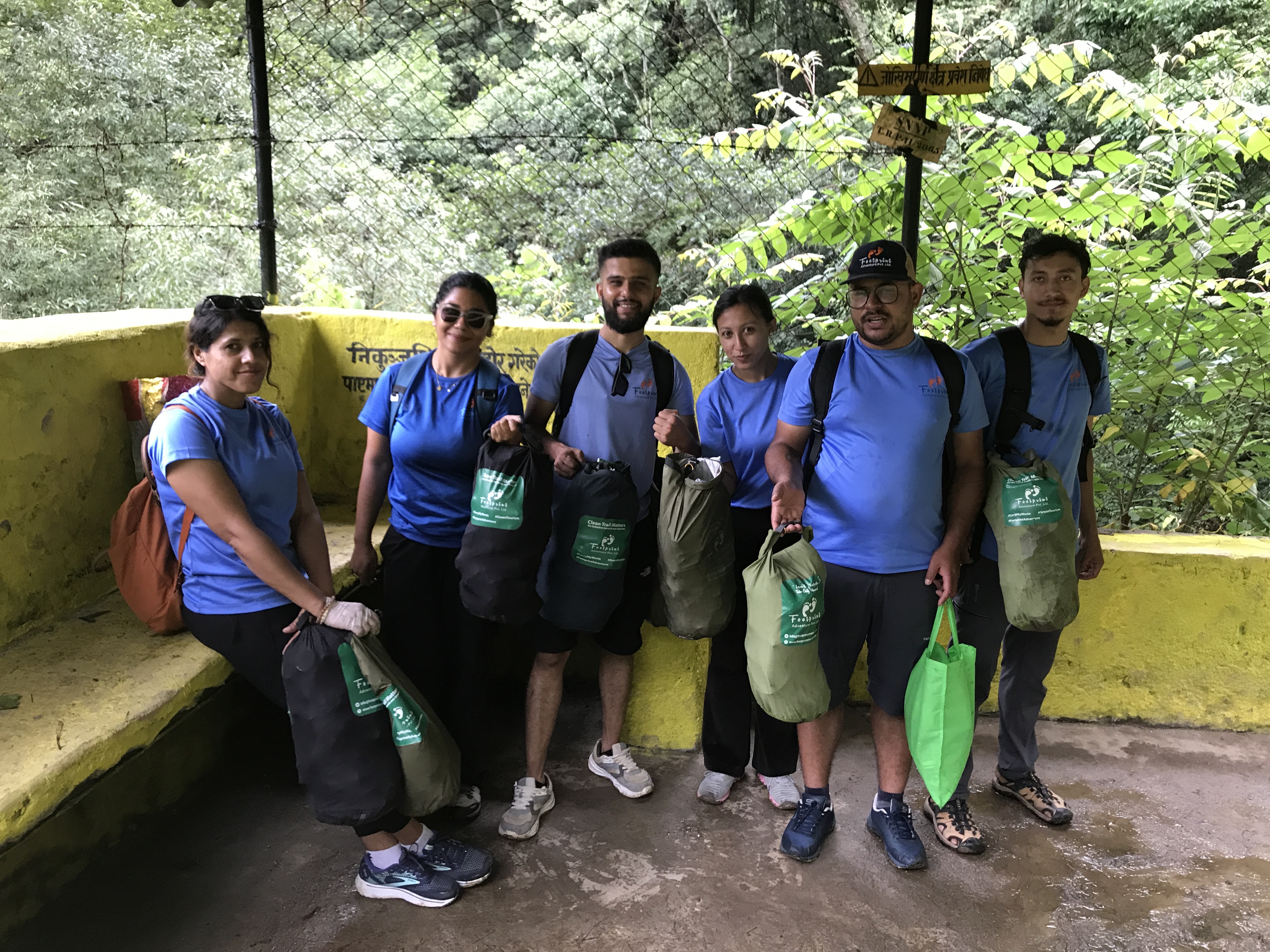
Quick Tips:
- Join trail clean-up events or eco-treks on your trip.
- Support or join organizations that promote clean trekking.
- Pick up conspicuous garbage on your trek—it counts.
8. Educate Other Trekkers and Guides
Trekking sustainably isn't just a matter of your actions—it's also about inspiring a group effort. Many times, other trekkers or even local guides simply have no awareness of the environmental consequences of some actions, such as littering, incinerating plastic, or using an excess of throwaways. A friendly, courteous conversation may work. If someone makes an unsustainable choice, politely offer a different alternative or the impact. Encourage your guide, porter, or group to use environmentally friendly practices like picking up litter or taking reusable gear. Trekking with responsible trekking agencies also serves to instill good practice and a culture of sustainability on Nepal's trails.
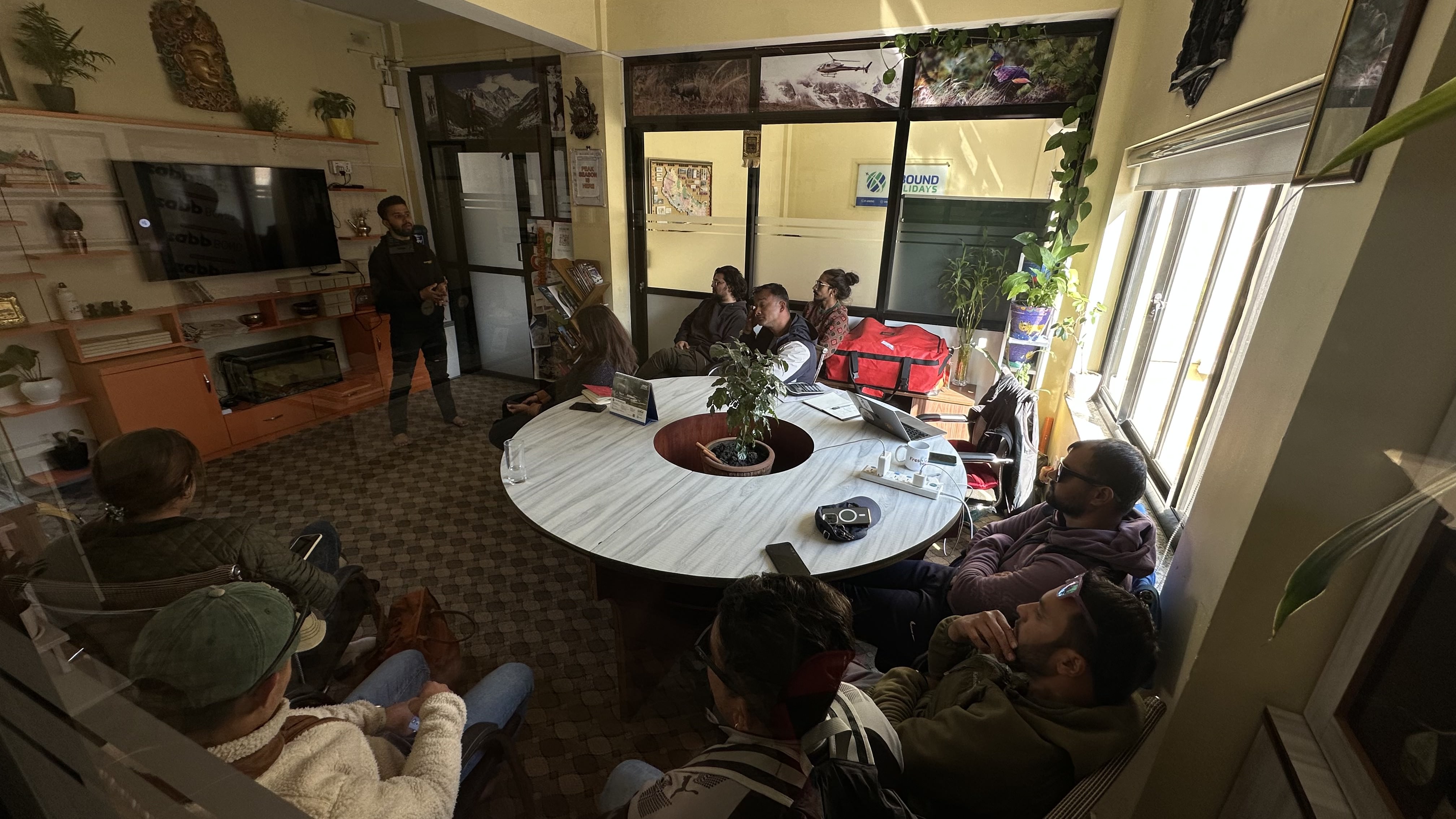
Quick Tips:
- Chastely protest when you see litter or vandalism.
- Encourage guides and porters to adopt green practices.
- Choose trekking agencies that care about sustainability and are environmentally sensitive.
Conclusion
Trekking in Nepal is a breathtaking experience, but with that privilege comes responsibility. Every wrapper you leave out, every bottle you refuse to buy, and every fellow trekker you motivate leaves an impact. By doing the little things, you contribute to keeping the beauty of the Himalayas intact for future generations. Let's leave only footprints and take memories, not waste.
FAQs
1. Why is minimizing waste important while trekking in Nepal?
Waste reduction maintains Nepal's fragile mountain environment undisturbed. Busy trails lack good waste management, and waste can harm animals, pollute water sources, and destroy natural views for other trekkers.
2. What are the major sources of waste on trekking paths in Nepal?
The most common forms of waste are plastic bottles of water, food packaging, wet wipes, single-use toiletries, and highly packaged snacks carried by trekkers and porters.
3. How can I avoid plastic water bottles while trekking in Nepal?
Carry a refillable bottle of water or a hydration bladder and use purification methods like UV filters or water purification tablets. Most tea houses also offer safe boiled water for a small fee.
4. What are the eco-friendly personal care items that I must carry with me while trekking in Nepal?
Pack biodegradable soap, shampoo bars, and toothpaste. Avoid wet wipes unless they are compostable or reusable.
5. Can I bring my food to avoid packaged food?
Yes. Pack dried fruits, nuts, or energy bars in zip-lock bags or pouches that are reusable and made of fabric. This reduces packaging waste and keeps your pack light and simple to carry.
6. Are local clean-up activities available where I can join in during my trek?
Yes, some trekking agencies like Footprint Adventure and communities run clean-up drives, especially in destination areas such as Everest and Annapurna. Check out Footprint’s special package here.
7. What is a "leave no trace" policy for trekking?
"Leave no trace" is a phrase that means you leave nature just the way you discovered it—no waste, no destruction, and no litter. It involves packing out your garbage, not disturbing animals, and reducing your footprint.
8. How do I handle garbage on a multi-day backpack?
Carry a little dry sack or garbage bag within your pack. Collect all your non-biodegradable waste and dispose of it in a responsible manner in urban areas like Pokhara or Kathmandu, where disposal facilities are available.
9. What shouldn't I carry in order to achieve my trek as zero-waste?
Single-use plastics, disposable cutlery, packaged foods, and chemical-based toiletries should not be brought. Instead, carry reusable cutlery, eco-friendly toiletries, and hygiene items, and green packaging.
10. How can I encourage others to trek responsibly in Nepal?
Lead by example, instruct other trekkers politely, and trek with or patronize environmentally friendly trekking agencies. Sharing tips and good stories on social media is also part of awareness generation.







